15 years one-stop China custom CNC machining parts factory
 178 |
Published by VMT at May 05 2025 | Reading Time:About 10 minutes
178 |
Published by VMT at May 05 2025 | Reading Time:About 10 minutes
When choosing materials for CNC machining, understanding the differences between HDPE and Delrin is crucial. Both materials are widely used in various industries, yet they have distinct properties that make them more suited for specific applications. Whether you're working on automotive, aerospace, or consumer goods components, making the right choice could mean the difference between durability and failure. This article will compare HDPE and Delrin, examining their properties, applications, advantages, and limitations to help you make an informed decision.
HDPE and Delrin are two of the most popular materials used in CNC machining. While both offer high performance and versatility, their differences in mechanical strength, chemical resistance, and processability make them suitable for different applications. By understanding the unique characteristics of HDPE and Delrin, you can choose the right material for your next project.
Before diving into the specific properties and applications of HDPE and Delrin, let’s first explore what each material is, how it’s made, and what makes them stand out in the world of CNC machining. Whether you're dealing with packaging, automotive parts, or medical devices, knowing the strengths and limitations of HDPE vs. Delrin will help guide your material selection process.
High-Density Polyethylene (HDPE) is a thermoplastic polymer known for its excellent strength-to-density ratio, making it one of the most versatile and widely used plastic materials. It is derived from petroleum and is categorized as a type of polyethylene, with the key characteristic of having a higher density than its low-density counterpart, LDPE. HDPE has a linear structure with minimal branching, allowing its molecules to pack tightly together, contributing to its strength and durability.
Due to its robustness and ability to withstand harsh environmental conditions, HDPE is commonly used in a wide variety of industries. It is recognized for its high chemical resistance, making it resistant to many acids, alkalis, and solvents, which is why it is often used for containers, pipes, and other products that come into contact with hazardous substances.
In addition to its strength and chemical resistance, HDPE is also lightweight, moisture-resistant, and non-toxic. These properties make it an ideal choice for applications ranging from consumer goods and food packaging to construction and industrial uses. Its recyclability also contributes to its widespread adoption, as HDPE products are often recycled into new items, reducing environmental impact.
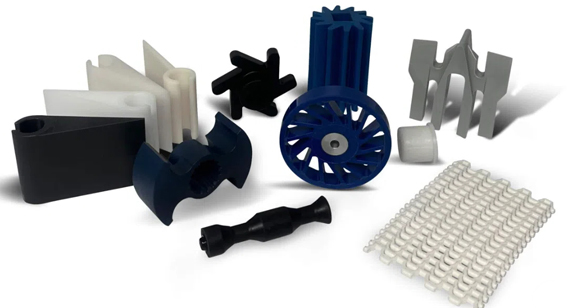
Delrin, also known as Polyoxymethylene (POM), is a high-performance engineering plastic known for its exceptional mechanical properties and versatility in demanding applications. It is a crystalline thermoplastic polymer, which means it has a highly organized molecular structure that gives it a unique combination of strength, stiffness, and dimensional stability. Delrin is commonly used for precision parts that require a high degree of performance, such as gears, bearings, and other high-load applications.
One of the key features of Delrin is its high mechanical strength. It maintains its rigidity even under significant loads, making it ideal for components that need to withstand constant stress or pressure. Additionally, Delrin exhibits excellent resistance to wear and friction, making it an ideal choice for moving parts that are subject to frequent contact, such as gears, bushings, and sliding components.
Delrin also has outstanding chemical resistance, making it resistant to a wide range of chemicals, including solvents, oils, and fuels. This property, combined with its moisture resistance and low water absorption rate, means that Delrin performs well in harsh environmental conditions without degrading over time.
Beyond its mechanical properties, Delrin is also known for its excellent surface finish, which is often smooth and shiny, providing both aesthetic appeal and functional benefits. It is a popular material in industries such as automotive, aerospace, electronics, and medical devices, where high-performance plastic parts are required to meet stringent standards of quality, durability, and precision.
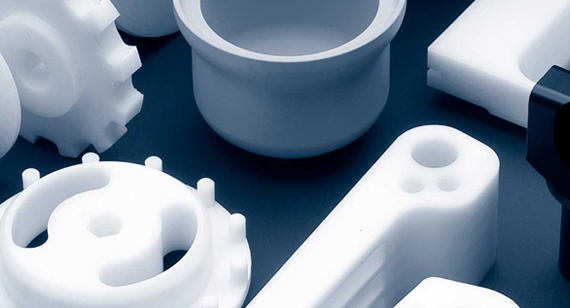
When comparing HDPE (High-Density Polyethylene) and Delrin (Polyoxymethylene), understanding their material properties is crucial for determining which is better suited for a particular application. Both materials offer unique advantages, but their properties differ in several key areas, such as strength, processability, and resistance to various factors. Let’s explore these properties to gain a clearer picture of how each material performs under different conditions.
Melting Point
The melting point is a critical factor when choosing a material for high-temperature applications. HDPE has a melting point around 130°C to 137°C (266°F to 279°F), which makes it suitable for a variety of moderate temperature applications. Delrin, on the other hand, has a much higher melting point of approximately 175°C (347°F), making it a better choice for applications that involve elevated temperatures or consistent exposure to heat.
Density
Density plays an important role in determining the weight and strength-to-weight ratio of a material. HDPE has a relatively low density, typically around 0.94–0.97 g/cm³, which contributes to its light weight and ease of handling in various manufacturing processes. Delrin, being a more rigid material, has a higher density of about 1.41 g/cm³. This gives Delrin enhanced strength and durability, particularly in structural components that need to withstand significant stress.
Tensile Strength
Tensile strength refers to a material's ability to resist forces that attempt to pull it apart. HDPE has a tensile strength of around 25–37 MPa, which makes it suitable for lightweight, non-load-bearing applications. Delrin, on the other hand, boasts a much higher tensile strength, generally around 60–90 MPa, offering superior strength for high-load applications, including gears, bearings, and other precision parts that demand robust performance.
Water Absorption
Water absorption is an important property when considering materials for use in humid or wet environments. HDPE has low water absorption, typically less than 0.01%. This means it will not swell or degrade significantly when exposed to moisture. Delrin also has low water absorption, but slightly higher at around 0.25%, meaning it can absorb more water over time, which might slightly impact its dimensional stability in extreme environments.
Chemical Resistance
Both HDPE and Delrin exhibit excellent chemical resistance, but their performance can differ depending on the chemicals involved. HDPE is known for its outstanding resistance to a wide range of chemicals, including acids, bases, and solvents. Delrin, while also resistant to many chemicals, may degrade in the presence of strong oxidizing agents, such as concentrated acids. However, Delrin generally performs better with oils, fuels, and other non-oxidizing chemicals, making it more suitable for use in automotive and industrial applications.
Heat Deflection Temperature
The Heat Deflection Temperature (HDT) indicates the temperature at which a material deforms under a specified load. HDPE has a relatively low HDT of around 80–100°C (176–212°F), which limits its use in high-temperature environments. Delrin, however, has a much higher HDT, typically around 150°C (302°F), enabling it to maintain its shape and mechanical properties in more extreme temperature conditions.
Impact Resistance
Impact resistance is a crucial property for materials used in applications that involve sudden force or impact. HDPE is highly impact-resistant, which is one of the reasons it is used in products like containers and piping that may be exposed to rough handling. Delrin, while also impact-resistant, is less forgiving under high-energy impacts and may crack or fracture under severe shock loads. However, Delrin’s higher tensile strength makes it more suitable for high-load, low-impact applications.
Fatigue Resistance
Fatigue resistance refers to a material's ability to withstand cyclic loading without failure. HDPE exhibits good fatigue resistance, making it ideal for applications that involve repetitive motion, such as conveyor belts or flexible joints. Delrin, due to its higher tensile strength and rigidity, excels in fatigue resistance, particularly in applications where parts experience repetitive stresses and are required to maintain their form over extended periods.
Processability
Processability is an essential consideration when selecting materials for CNC machining, injection molding, or other manufacturing methods. HDPE is easy to process and mold, thanks to its low melting point and low viscosity, making it highly versatile in various fabrication processes. Delrin, although it requires more precise handling due to its higher melting point and greater rigidity, offers excellent machining qualities, allowing for the production of highly detailed and dimensionally stable parts. CNC machining Delrin is a common practice, especially in industries that require high-precision components.
These material properties highlight the strengths and limitations of both HDPE and Delrin. By understanding these properties, manufacturers can make better decisions regarding which material is best suited for their specific application needs. Whether you’re looking for a lightweight, flexible material or a high-strength, heat-resistant option, both HDPE and Delrin offer unique advantages that can help optimize product performance.
| Properties |
HDPE |
Delrin |
| Melting Point |
130°C |
175°C |
| Density |
0.95 g/cm³ |
1.41 g/cm³ |
| Tensile Strength |
20 MPa |
55 MPa |
| Water Absorption |
Has a very low water absorption rate,making it water resistant |
Has a low water absorption rate,making it water resistant |
| Chemical Resistance |
Excellent chemical resistance |
Good chemical resistance |
| Heat Deflection Temperature |
76.5 °C |
70°C |
| Impact Resistance |
About 4 Ft.-lb/inch of notch |
About 2 Ft.-lb/inch of notch |
| Fatigue |
Good fatigue resistance |
Good fatigue resistance |
| Machinability |
Good machinability |
Good machinability |
Advantages of Processing with HDPE vs. Delrin
When choosing between HDPE (High-Density Polyethylene) and Delrin (Polyoxymethylene) for processing and manufacturing applications, it’s important to consider the unique advantages each material offers. Both HDPE and Delrin are highly regarded for their mechanical properties and versatility, but they cater to different sets of requirements based on the needs of the project. Below, we’ll explore the specific advantages of HDPE and Delrin, which can help guide your decision-making process.
Advantages of High-Density Polyethylene (HDPE)
HDPE is a highly versatile and cost-effective material with several notable advantages that make it suitable for a broad range of applications. It is favored in industries ranging from packaging and construction to automotive and industrial sectors. Here are the primary advantages of processing with HDPE:
Strength and Durability
One of the key reasons HDPE is a preferred material for many industries is its strength and durability. While HDPE has a relatively lower tensile strength compared to materials like Delrin, its robustness makes it highly suitable for applications that involve moderate mechanical stress. The material exhibits excellent resistance to impact and can withstand considerable wear and tear. It is often used in products such as storage containers, pipes, and toys, where durability is crucial.
Chemical Resistance
HDPE has exceptional chemical resistance, making it an ideal choice for applications that require frequent exposure to harsh chemicals, acids, and bases. It is commonly used in the chemical industry for tanks, pipes, and storage containers that need to withstand the corrosive effects of various substances. HDPE’s ability to resist chemical degradation means that products made from this material will have a long service life, reducing the need for frequent maintenance and replacements.
Low Moisture Absorption
HDPE has very low moisture absorption, typically under 0.01%, which makes it highly resistant to swelling or degradation in humid or wet environments. This property ensures that HDPE products maintain their shape and strength, even when exposed to moisture for extended periods. This makes it ideal for outdoor applications such as drainage pipes, rainwater harvesting systems, and water tanks.
Versatility
HDPE is highly versatile in terms of processing and application. It can be easily fabricated into various forms, including sheets, rods, and pipes, and can be processed using a wide range of methods, such as extrusion, injection molding, and blow molding. This makes it a go-to material for many industries, including automotive, construction, agriculture, and packaging.
Recyclability
A standout advantage of HDPE is its recyclability. It is one of the most commonly recycled plastics and can be repurposed into new products, reducing its environmental impact. This eco-friendly property has made HDPE a preferred choice for companies and manufacturers looking to reduce their carbon footprint and promote sustainability. Items such as milk jugs, detergent bottles, and plastic bags are often made from recycled HDPE.
Advantages of Delrin (Polyoxymethylene)
Delrin, also known as acetal, is a high-performance plastic known for its superior mechanical properties, particularly in applications that require high strength, stiffness, and precision. It is ideal for use in parts and components that need to withstand heavy loads and maintain dimensional stability over time. Here’s an overview of the primary advantages of Delrin:
High Mechanical Strength
Delrin is renowned for its high mechanical strength, which is significantly higher than HDPE’s. This makes it particularly well-suited for load-bearing applications where strength is a critical factor. Parts such as gears, bearings, and bushings made from Delrin can handle higher loads and stresses without deforming or breaking. This superior strength allows Delrin to be used in industries like automotive, aerospace, and robotics, where performance under stress is crucial.
Low Friction and Abrasion Resistance
Delrin offers excellent resistance to friction and wear, which is why it is often used in applications where moving parts need to operate smoothly and efficiently. Its low friction properties make it a perfect choice for producing gears, bearings, and sliding components that experience frequent motion. The material’s ability to maintain smooth operation over time helps reduce wear and tear, extending the life of critical components.
Chemical Resistance
Like HDPE, Delrin exhibits strong resistance to a wide range of chemicals, including oils, fuels, and solvents. However, Delrin performs better in non-oxidizing chemical environments, where HDPE might degrade or break down over time. This makes Delrin the preferred material for automotive, aerospace, and industrial applications where parts are regularly exposed to oils, lubricants, and other chemicals.
Dimensional Stability
One of Delrin’s most notable advantages is its exceptional dimensional stability. Unlike HDPE, which can expand or contract with temperature changes, Delrin maintains its shape and size under a wide range of conditions. This makes it an ideal material for manufacturing high-precision components, such as gears, cams, and other mechanical parts, that require consistent dimensional accuracy throughout their lifecycle.
Low Moisture Absorption
Delrin also boasts low moisture absorption, similar to HDPE. This ensures that the material retains its structural integrity and dimensional stability even in humid environments. This property makes Delrin ideal for applications in environments with fluctuating humidity, such as in the automotive and aerospace industries, where moisture-related swelling or warping could be detrimental to the performance of critical components.
In conclusion, both HDPE and Delrin offer distinct advantages depending on the nature of the application. HDPE is a versatile, cost-effective material with excellent chemical resistance and low moisture absorption, making it suitable for a wide range of industries. Delrin, on the other hand, excels in high-performance applications requiring strength, durability, low friction, and dimensional stability. Understanding the specific advantages of these materials can help manufacturers make informed decisions when selecting the right material for their processing needs.
When choosing materials for various applications, particularly in industries that deal with food, pharmaceuticals, automotive, and aerospace sectors, safety is a critical factor. Both HDPE (High-Density Polyethylene) and Delrin (Polyoxymethylene) are considered safe for many applications, but they have different safety profiles depending on their chemical resistance, temperature tolerance, and specific environmental conditions. Understanding the safety aspects of both materials can help ensure their proper use and minimize risks in sensitive applications.
Safety of HDPE
HDPE is one of the safest plastic materials available, commonly used in products that come in direct contact with food and beverages, such as bottles, containers, and packaging materials. The material’s safety profile is largely attributed to its non-toxic nature and FDA approval for food-grade use.
Non-Toxicity
HDPE is non-toxic, which makes it a highly preferred material for applications involving food and beverages. It does not leach harmful chemicals into the environment or into the product it contains. This is one of the key reasons why HDPE is used in manufacturing items like milk jugs, food containers, and drinking straws. Additionally, HDPE is BPA-free (Bisphenol A), which is a concern with many other plastics that may release harmful substances when exposed to heat or wear.
FDA and NSF Approval
HDPE is approved by the Food and Drug Administration (FDA) and the National Sanitation Foundation (NSF) for direct food contact, which adds to its safety appeal. This approval assures consumers and manufacturers that the material will not introduce hazardous substances into food or beverages. This makes HDPE an excellent choice for packaging, food storage, and other food-related applications.
Chemical Safety
HDPE also excels in safety when it comes to chemical resistance. It is resistant to a wide range of chemicals, including acids, alkalis, and solvents, without degrading or leaching harmful compounds. This makes it safe to use in environments where it will be exposed to such substances, such as in chemical storage containers, piping systems, and industrial tanks.
Heat Safety
HDPE has a relatively low melting point (around 130-137°C), which means it can become soft or deform at high temperatures. While it is safe for a wide range of ambient conditions, caution must be taken when exposed to extreme heat, as it could weaken the material and lead to deformation or failure.
Safety of Delrin
Delrin, while a high-performance plastic, has a slightly different safety profile. It is often used in mechanical applications that require durability, strength, and precision. Delrin’s safety largely depends on its chemical resistance, temperature tolerance, and ease of machining.
Non-Toxicity and Food Safety
Delrin is also considered safe for many applications; however, it is generally not FDA-approved for food-grade use unless specifically treated or modified. Unlike HDPE, Delrin is not commonly used in direct food contact applications. However, it is safe to use in non-food-related applications, such as in automotive, aerospace, and industrial components, where there is no risk of human ingestion or contamination.
Chemical Safety
Delrin has good chemical resistance, especially to hydrocarbons, oils, and solvents, but it is less resistant to acids and bases compared to HDPE. This could pose a safety risk if Delrin is exposed to such chemicals in extreme conditions. The material remains stable under most mechanical stresses and will not degrade or release harmful substances in non-corrosive environments.
Heat Safety
Delrin performs well under a wide range of temperatures, with a heat deflection temperature of around 120°C (248°F). While this is significantly higher than HDPE’s melting point, Delrin can still degrade at higher temperatures (above 150°C) if exposed for extended periods. As with HDPE, it's important to keep Delrin away from excessive heat to prevent deformation, thermal stress, or breakdown.
Flammability
Delrin is flammable and can catch fire if exposed to direct flames. However, it has good flame resistance compared to many other plastics and self-extinguishes once the source of heat or flame is removed. In industrial environments, where Delrin parts may be exposed to heat or combustion, proper fire safety measures should always be implemented.
Comparing HDPE and Delrin Safety
Conclusion
Both HDPE and Delrin are safe for use in a wide range of applications, but they each have unique safety considerations depending on the specific use case. HDPE is a highly safe material, particularly for food-grade and chemical-resistant applications, whereas Delrin is better suited for mechanical, automotive, and aerospace applications where high strength, low friction, and precision are paramount. Understanding the safety profiles of these materials ensures that they are selected and processed in the most appropriate environments for optimal performance and safety.
Interested in learning more about how these materials can be processed for your project? Reach out to VMT for expert guidance on HDPE and Delrin CNC machining services!
When it comes to sustainability, both HDPE (High-Density Polyethylene) and Delrin (Polyoxymethylene) offer distinct advantages, but their environmental impact and recyclability differ significantly. As industries shift toward more eco-conscious practices, understanding the recyclability and sustainability of materials is crucial for making informed decisions, especially in industries where waste reduction and long-term environmental effects are priorities.
Recyclability of HDPE
HDPE is widely regarded as one of the most recyclable plastics available, making it a popular choice for manufacturers and consumers alike when sustainability is a key concern. In fact, HDPE is one of the few plastic materials that is commonly recycled in curbside recycling programs, making it easy for consumers to dispose of HDPE products responsibly. The material is marked with the recycling code “2,” signifying that it is recyclable and can be repurposed into new products after its initial use.
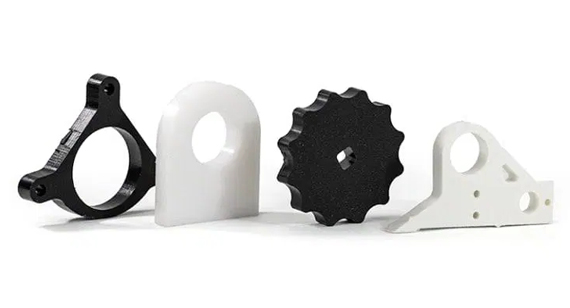
How HDPE is Recycled
HDPE can be processed through various recycling methods, including shredding, melting, and re-molding. When HDPE products are recycled, they can be transformed into a variety of new items, including:
Recycling HDPE conserves resources and reduces the demand for virgin plastic, lowering the environmental footprint associated with the production of new plastic products.
Sustainability of HDPE
HDPE is not only recyclable but also contributes to sustainability in several ways:
Despite its many sustainable advantages, it’s important to note that HDPE can still take hundreds of years to break down in landfills if it is not recycled properly. As with any material, responsible disposal and recycling are crucial to maximizing its sustainability.
Recyclability of Delrin
Unlike HDPE, Delrin is not as easily recyclable, and it’s typically not accepted in standard curbside recycling programs. The nature of Delrin’s chemical structure and high-performance properties makes it more challenging to recycle. Delrin is a high-strength acetal resin, often used in precision-engineered parts that require durability and resistance to wear. While Delrin can be processed in some specialized recycling programs, its recycling rate is relatively low compared to HDPE.
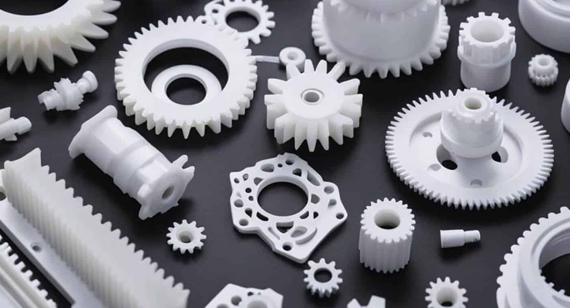
Challenges of Recycling Delrin
The main challenge in recycling Delrin is that it is a thermoplastic that contains additives and stabilizers which can complicate the recycling process. It also tends to degrade when exposed to heat during recycling, making it difficult to repurpose into new products. As a result, Delrin products that have reached the end of their useful life are typically disposed of rather than recycled. Some specialized recycling programs may be able to reclaim and recycle Delrin, but such programs are less widespread and not as accessible as those for HDPE.
Sustainability of Delrin
While Delrin is not as easily recyclable, it still offers certain sustainability benefits in its usage and longevity:
However, the fact that Delrin is not widely recyclable and may not be easily disposed of in an environmentally friendly manner remains a significant sustainability drawback.
Comparing the Recyclability and Sustainability of HDPE and Delrin
Conclusion
While both HDPE and Delrin offer notable durability and strength, HDPE has a clear advantage when it comes to recyclability and sustainability. Its widespread recyclability and the ability to be transformed into new products make it a more sustainable choice in a circular economy. On the other hand, Delrin, while highly durable and efficient, poses challenges for recycling, and its sustainability largely depends on its long-lasting nature in industrial and mechanical applications. Understanding the recyclability and sustainability of these materials is crucial when making decisions for environmentally-conscious projects and applications.
If you’re looking for guidance on how to use these materials in your projects, VMT CNC machining services offer expert advice and precision machining of HDPE and Delrin components to fit your specific needs. Reach out to us to learn more!
The choice of processing method plays a crucial role in determining the performance, cost, and application suitability of materials like HDPE (High-Density Polyethylene) and Delrin (Polyoxymethylene). Both HDPE and Delrin have specific processing methods that allow them to be transformed into parts and products for various industries, each with its unique advantages and challenges. In this section, we'll explore the main processing techniques for both materials to highlight their compatibility with different manufacturing needs.
HDPE Processing Methods
HDPE is a versatile material that can be processed using a variety of methods depending on the specific application requirements, such as shape, size, and material performance. Below are the most common processing methods for HDPE:
Injection Molding
Injection molding is one of the most widely used processing methods for HDPE, especially for high-volume manufacturing. In this process, HDPE pellets are melted and injected into a mold under high pressure. This method is ideal for producing complex shapes and parts with tight tolerances. It offers high production rates and can be used for a wide range of products, from consumer goods to industrial components.
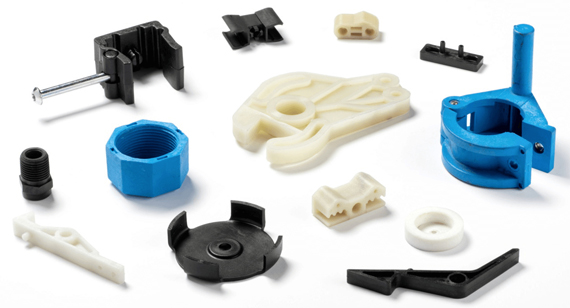
Advantages:
Applications: Bottles, containers, automotive parts, and toys.
Extrusion Molding
Extrusion molding is commonly used for creating long, continuous shapes like pipes, sheets, and films. In this process, HDPE material is melted and forced through a die to create the desired profile. The extruded HDPE is then cooled and cut to length. This method is ideal for applications that require uniform cross-sections and is often used for large-scale production runs.
Advantages:
Applications: Pipes, tubes, plastic films, and sheets.
Blow Molding
Blow molding is primarily used for creating hollow parts, such as bottles or containers. In this process, a tube of molten HDPE is inflated inside a mold to form the desired shape. This technique is best for creating lightweight, hollow components with uniform wall thickness. Blow molding is commonly used for packaging applications, especially for bottles and jugs.
Advantages:
Applications: Bottles, jugs, and containers.
Rotational Molding
Rotational molding is used for creating large, hollow products, typically in low- to medium-volume runs. In this process, HDPE powder is placed in a mold that is heated and rotated along two axes. The material melts and coats the mold's interior surface, forming a hollow part. This method is typically used for creating large, robust parts.
Advantages:
Applications: Storage tanks, containers, and playground equipment.
Delrin Processing Methods
Delrin, known for its superior mechanical properties, is processed using different techniques that focus on achieving precision and durability in the final product. Here are the main processing methods for Delrin:
Injection Molding
Like HDPE, Delrin can be processed through injection molding, especially for producing intricate shapes with high precision. The process involves melting Delrin pellets and injecting them into a mold cavity under pressure. Delrin’s excellent flow properties make it ideal for this method, resulting in sharp details, smooth surfaces, and tight tolerances. This method is commonly used for high-volume, precision-engineered parts.
Advantages:
Applications: Gears, bearings, bushings, and automotive components.
Extrusion Molding
Extrusion molding is also applicable to Delrin, although less common compared to HDPE. Delrin’s high melting point and crystalline structure make it more challenging to extrude than HDPE, but it can still be processed for producing rods, sheets, and films. The process involves heating Delrin and forcing it through a die to form continuous shapes.
Advantages:
Applications: Rods, sheets, and custom parts.
CNC machining is one of the most commonly used methods for producing Delrin parts, especially when high precision and intricate geometries are required. CNC machines use computer-controlled tools to cut, mill, drill, and turn Delrin into parts with exact specifications. This process is ideal for creating low-volume, high-precision components for applications that demand dimensional stability and fine details.
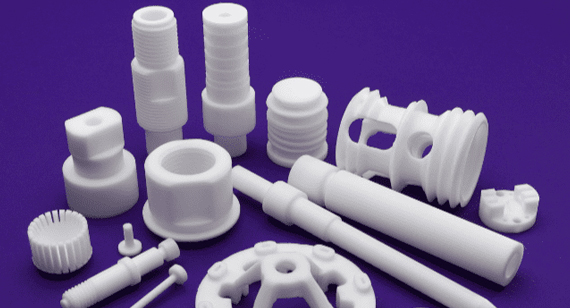
Advantages:
Applications: Custom gears, bushings, seals, and aerospace components.
Compression Molding
Compression molding is a process where Delrin powder is placed into a mold cavity, and then heat and pressure are applied to form the desired shape. This method is typically used for creating parts with uniform thickness and for applications where high-strength parts are required. Compression molding is not as commonly used for Delrin as injection molding but can be suitable for specific applications.
Advantages:
Applications: Seals, washers, and large custom components.
Comparison of Processing Methods
Conclusion
The choice of processing method for HDPE and Delrin depends on the material's properties, the desired end product, and the intended application. HDPE is highly versatile and is best suited for high-volume, cost-effective manufacturing of products like containers, pipes, and films, utilizing methods such as injection molding, extrusion molding, and blow molding. On the other hand, Delrin is ideal for applications requiring high precision, mechanical strength, and dimensional stability, with CNC machining being the preferred method for producing complex parts. Understanding the differences in processing methods helps manufacturers make informed decisions about which material to choose for specific applications.
At VMT, we specialize in precision CNC machining services for Delrin and HDPE parts, ensuring that your components meet the highest quality standards. If you're interested in exploring more about how these materials can be processed, reach out to our team for expert advice and service.
When deciding between HDPE (High-Density Polyethylene) and Delrin (Polyoxymethylene) for your project, cost is an essential factor to consider. Both materials offer distinct advantages in terms of mechanical properties, durability, and processing capabilities, but they come at different price points. Understanding the cost differences between HDPE and Delrin is crucial for manufacturers, engineers, and buyers aiming to make the most cost-effective choice for their specific application.
Cost of HDPE
HDPE is widely regarded as one of the most economical plastic materials available, making it a popular choice for high-volume manufacturing applications. The primary reason for its lower cost is its abundance and relatively simple processing methods. HDPE’s low production costs are further supported by its versatility in applications, such as packaging, piping, and consumer goods.
While HDPE is cheap, it may not always be suitable for high-performance applications where more robust materials are needed. For example, HDPE lacks the mechanical strength and dimensional stability found in engineering plastics like Delrin, which might necessitate the use of more expensive materials in demanding industries like automotive or aerospace.
Cost of Delrin
Delrin, on the other hand, is a high-performance plastic with superior mechanical properties, such as high strength, stiffness, and low friction. These features make it suitable for demanding applications in industries like automotive, aerospace, electronics, and medical devices. However, Delrin comes at a higher price point due to its advanced polymerization process and its ability to perform in harsh environments.
Delrin’s higher cost is often justified by its superior performance in high-stress environments. For industries that require low wear, high load-bearing capacity, and resistance to harsh chemicals, the additional expense is considered an investment in longevity and reliability.
Price Comparison
To put things into perspective, here’s a general cost breakdown for both materials:
Though HDPE is substantially more affordable upfront, Delrin’s higher cost can be justified in applications where superior mechanical properties, long-term durability, and precision are required. The choice ultimately depends on the nature of the application, the required material performance, and the available budget for the project.
Long-Term Costs and Value
While the initial cost difference between HDPE and Delrin is significant, the long-term value of Delrin may make it more cost-effective in certain situations. For example, Delrin’s low friction and wear resistance can result in longer service lives for parts like gears, bearings, and automotive components, reducing the frequency of replacements and repairs. In contrast, while HDPE is affordable, it may not hold up as well under stress and may need to be replaced more often in high-performance applications.
Additionally, Delrin’s superior dimensional stability ensures that parts retain their precision even after extended use, which can be a crucial factor in industries where accuracy is paramount. On the other hand, HDPE’s lower cost may be sufficient for less demanding applications, where durability is not as critical, and the product is not subject to high mechanical stresses.
Conclusion
In conclusion, HDPE is a cost-effective material that excels in mass-produced applications, making it ideal for industries where affordability is the primary concern. Its low raw material and processing costs contribute to its widespread use in packaging, pipes, and other consumer products. However, when performance, durability, and precision are key, Delrin is a superior choice, albeit at a higher price point. The decision to choose HDPE or Delrin ultimately depends on your application’s performance requirements and budget considerations. For high-performance, long-lasting, and precise parts, Delrin offers unmatched value despite its higher initial cost.
At VMT, we offer both HDPE and Delrin CNC machining services, ensuring that you get the right material for your needs at competitive prices. Whether you’re looking for a cost-effective solution or require precision-engineered components, our team is here to help.
When choosing between HDPE (High-Density Polyethylene) and Delrin (Polyoxymethylene), it’s important to consider the specific application and performance needs of your project. Both materials are versatile, but they each have unique properties that make them suited for particular uses. HDPE is an affordable, highly flexible material, commonly used in a variety of industries, while Delrin is a high-performance thermoplastic that is favored for precision applications requiring strength, durability, and resistance to wear. Below, we explore the diverse applications of each material.
Applications of HDPE
HDPE is one of the most widely used plastic materials across multiple industries due to its affordability, versatility, and impressive physical properties. Let’s take a closer look at the various industries and applications where HDPE is commonly used:
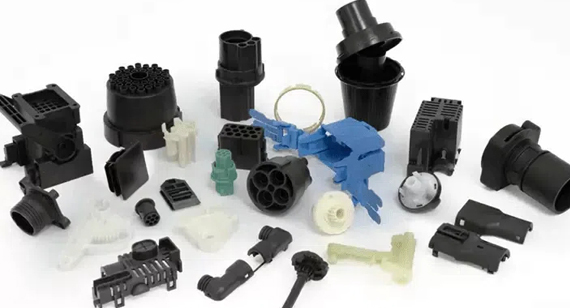
Packaging
HDPE is extensively used in packaging applications. Its durability, strength, and moisture resistance make it ideal for products like bottles, containers, and plastic bags. HDPE containers are commonly used in food packaging, pharmaceuticals, and household goods, as the material provides excellent protection against contaminants, chemicals, and moisture. Additionally, HDPE is resistant to many acids and alkalis, making it a perfect material for the storage of household cleaning products and industrial chemicals.
Pipes
HDPE pipes are renowned for their superior durability and resistance to corrosion and chemical attacks, making them a go-to material for water, gas, and sewage piping systems. HDPE pipes are also lighter than traditional metal pipes, which makes them easier to transport and install. The flexibility of HDPE allows for fewer joints, reducing the risk of leaks in pipe systems. Additionally, HDPE pipes can withstand extreme temperatures, making them suitable for both hot and cold water transportation.
Consumer Goods
As a widely available material, HDPE plays a key role in the production of numerous consumer goods. Its versatility allows for the design and manufacturing of a wide variety of products, from toys to household items. In the consumer goods sector, HDPE is valued for its resistance to impact, making it a popular choice for products that need to endure everyday wear and tear.
Agriculture
HDPE is commonly used in agricultural applications due to its strength, resistance to environmental stress, and ease of fabrication. For instance, HDPE is used in the manufacturing of greenhouse films, irrigation systems, and mulch films. It is highly resistant to environmental factors like UV exposure and harsh chemicals, making it suitable for prolonged outdoor use.
Construction
In the construction industry, HDPE is used for a variety of applications due to its toughness and ability to withstand wear and tear. It is frequently used as a material for building foundations, drainage systems, and roofing membranes. HDPE’s resistance to moisture, corrosion, and chemical exposure also makes it ideal for underground applications.
HDPE’s insulating properties make it an excellent choice for electrical insulation. It is often used in electrical cables and wiring, as it provides excellent protection from electrical currents and environmental elements. Additionally, HDPE's high dielectric strength makes it suitable for use in the electrical industry, offering a reliable solution for both residential and industrial applications.
Industrial
In industrial settings, HDPE is used in the manufacture of heavy-duty components that require resistance to chemical damage, stress, and corrosion. HDPE is commonly employed in industrial storage containers, industrial liners, and other structural components that are exposed to harsh chemicals, oils, or acids. The material’s excellent chemical resistance also makes it ideal for chemical tanks and other storage systems.
Outdoor
Due to its high resistance to UV rays, weathering, and moisture, HDPE is widely used in outdoor applications. It maintains its physical properties even after prolonged exposure to the elements, making it an excellent choice for outdoor furniture, playground equipment, and signage. Its ability to withstand extreme weather conditions ensures that products made from HDPE remain durable and functional over time.
HDPE's wide array of applications across industries highlights its versatility and affordability, making it a popular choice for both consumer and industrial products. While HDPE excels in cost-effectiveness and utility in many sectors, certain high-performance applications require more specialized materials like Delrin. Next, let’s explore the applications of Delrin and how its unique properties make it ideal for demanding, precision-driven tasks.
Applications of Delrin
Delrin (Polyoxymethylene, or POM) is a high-performance thermoplastic material known for its excellent mechanical properties, dimensional stability, and durability. These qualities make it an ideal choice for various industrial, automotive, aerospace, medical, and consumer applications. Delrin's resistance to wear, friction, and chemicals, coupled with its ability to withstand extreme temperatures, makes it an essential material in demanding environments. Below are some of the primary applications where Delrin is used:
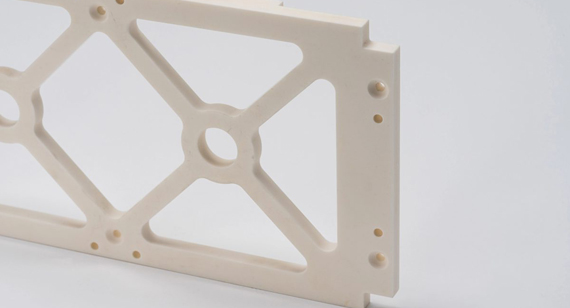
Delrin’s strength, rigidity, and low friction make it ideal for several automotive components that require precision and durability. It is commonly used for manufacturing gears, bearings, bushings, and rollers, which require high wear resistance and the ability to perform reliably under stress. Delrin is also used for interior components, such as door handles, locks, and window regulators, offering an excellent balance of performance and cost-effectiveness. Its resistance to moisture and chemicals further enhances its use in automotive systems exposed to harsh environments.
Aerospace Applications
In the aerospace industry, Delrin is valued for its lightweight nature, strength, and ability to perform under high stress and temperature fluctuations. It is used in a variety of aerospace applications, including structural components, aircraft interiors, and accessories. Delrin’s stability and resistance to fatigue make it a reliable material for parts that undergo repeated stress, such as fasteners, clips, and other mechanical components. Additionally, Delrin’s resistance to wear and low friction properties make it ideal for moving parts in critical aerospace systems.
Delrin is widely used in the electronics industry due to its insulating properties, strength, and durability. It is commonly used for electrical connectors, insulation components, and switches, where electrical resistance and stability are crucial. Delrin provides excellent dimensional stability, which ensures the reliable operation of electronic devices. Its ability to withstand high-frequency electrical loads and resist wear and tear makes it a popular choice for durable and long-lasting components in electronic systems.
Consumer Goods Applications
Delrin is commonly used in various consumer products due to its versatility, low friction, and wear resistance. It is particularly useful in the manufacturing of products such as zipper teeth, fasteners, and toy parts, where durability and smooth operation are key. Delrin’s ability to maintain its shape and properties under stress also makes it a popular choice for components that need to withstand frequent use, like fast-moving parts in household goods.
Delrin is increasingly used in the medical industry for making surgical instruments, valve components, and medical devices. Its biocompatibility, combined with its resistance to chemicals, makes it suitable for applications that require precision and reliability in sterile environments. Delrin's mechanical strength, low friction properties, and resistance to wear ensure the longevity and effectiveness of medical devices such as surgical tools, implantable devices, and diagnostic equipment.
Conveyor Belts
Delrin is widely used in the manufacturing of conveyor belts, particularly in industries that require high-performance materials. Its low friction properties ensure smooth operation of conveyor systems, while its toughness and wear resistance extend the lifespan of the belts. Delrin’s ability to handle repetitive movements and resist impact makes it an excellent choice for high-traffic conveyor systems in food processing, packaging, and material handling industries.
Safety Restraints
In the safety equipment industry, Delrin is utilized in various components that need to provide both strength and reliability. Delrin’s ability to withstand wear and tear, resist chemicals, and maintain dimensional stability under pressure makes it an ideal material for safety restraints such as seatbelt buckles, harnesses, and latches. These components need to be durable and capable of withstanding extreme conditions, and Delrin meets these needs efficiently.
Conclusion
Delrin’s excellent mechanical properties, chemical resistance, and dimensional stability make it a versatile material across multiple industries. Whether it’s for high-performance components in automotive systems, precision parts for aerospace, medical devices, or consumer goods, Delrin’s capabilities make it a reliable choice for applications that require durability, precision, and resistance to wear and stress. When choosing materials for CNC machining parts, Delrin offers a level of performance and longevity that is hard to match.
When considering materials for CNC machining parts, industries often look for alternatives to HDPE (High-Density Polyethylene) and Delrin (Polyoxymethylene or POM), depending on the specific requirements of the application. Several materials provide similar or even superior properties such as durability, strength, chemical resistance, and processability. In this section, we will explore some of the most commonly used alternatives to HDPE and Delrin: PEEK, Nylon, ABS, Ultem, and Polycarbonate.
PEEK is one of the most robust engineering plastics available, offering superior mechanical strength, chemical resistance, and heat tolerance. It has a high melting point (around 343°C) and can withstand temperatures up to 250°C in continuous use. Due to its excellent dimensional stability and resistance to harsh chemicals, PEEK is often used in aerospace, medical, and automotive applications. This material can handle extreme environments, including exposure to high temperatures, pressure, and aggressive chemicals. However, PEEK is typically more expensive than HDPE and Delrin, which may limit its use in some applications.
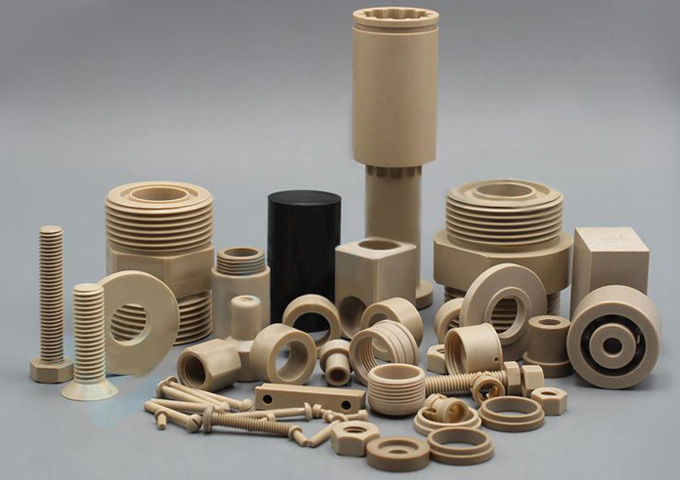
Nylon is a popular thermoplastic that is known for its toughness, flexibility, and resistance to abrasion. It performs well in applications where wear resistance and high strength are required. Nylon also has excellent chemical resistance, particularly to oils, fuels, and solvents. It is less expensive than PEEK and Delrin, making it a cost-effective option for many industrial applications. However, Nylon tends to absorb moisture, which can affect its dimensional stability and mechanical properties, so it must be used carefully in moisture-sensitive applications.
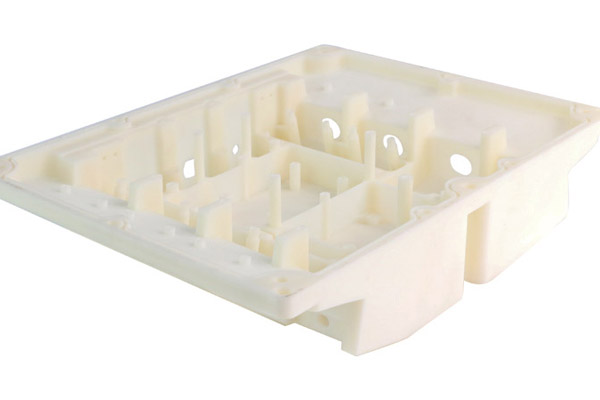
ABS (Acrylonitrile Butadiene Styrene)
ABS is a versatile thermoplastic known for its impact resistance, rigidity, and ease of processing. It has good resistance to many chemicals and can be easily molded into complex shapes, which makes it ideal for various industrial and consumer products. ABS is particularly known for its toughness and low cost, making it a popular alternative to Delrin in applications that don't require the high-strength properties of Delrin. However, ABS does not perform well under high temperatures compared to Delrin and may degrade when exposed to UV light for extended periods.
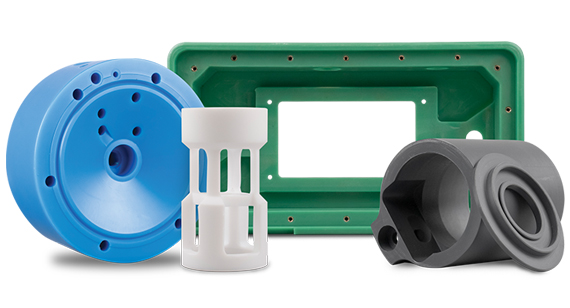
Ultem (Polyetherimide)
Ultem is a high-performance thermoplastic that excels in both strength and heat resistance. It can withstand continuous temperatures up to 170°C and has excellent dimensional stability, making it suitable for applications in the aerospace, medical, and automotive industries. Ultem offers good chemical resistance and is highly resistant to flame, making it ideal for applications requiring flame-retardant materials. However, its cost is higher than more common materials like HDPE and ABS, which can limit its use in budget-sensitive projects.
Polycarbonate
Polycarbonate is a transparent thermoplastic known for its high impact strength, dimensional stability, and optical clarity. It offers excellent resistance to breaking, making it a popular choice for protective covers, lenses, and safety equipment. Polycarbonate can handle temperatures up to 130°C and is resistant to many chemicals, though it is not as chemically resistant as PEEK or Delrin. It is also highly versatile in terms of machining and molding, making it suitable for a range of applications from industrial to consumer goods. However, polycarbonate may not be the best option for high-heat applications where materials like PEEK or Ultem would be more suitable.
Conclusion
When choosing an alternative material to HDPE or Delrin, it is important to consider the specific requirements of the application, such as mechanical strength, chemical resistance, temperature tolerance, and cost. While HDPE and Delrin remain popular choices for many industries, materials like PEEK, Nylon, ABS, Ultem, and Polycarbonate offer a range of additional benefits and can be better suited for high-performance or specialized applications. Selecting the right material depends on balancing the properties required for the end product and the material's performance in the intended environment. Each alternative material offers its own set of advantages, making it essential to carefully evaluate the needs of the project before making a decision.
At VMT CNC Factory, we pride ourselves on delivering high-quality CNC machining services for both HDPE (High-Density Polyethylene) and Delrin (Polyoxymethylene) plastic parts. Whether you're in need of precision machining for automotive components, medical devices, or industrial equipment, our advanced capabilities allow us to craft parts that meet the highest standards of durability, performance, and precision.
Why Choose VMT for HDPE and Delrin CNC Machining Parts?
Expertise in Materials VMT CNC Factory has years of experience working with a variety of engineering plastics, including HDPE and Delrin. Our skilled machinists and technicians understand the unique characteristics of these materials, allowing us to provide tailored solutions for your specific application. From ensuring dimensional accuracy to handling the material's processing challenges, we guarantee top-tier results every time.
Precision CNC Machining We utilize state-of-the-art CNC machining equipment that ensures precise and efficient production of HDPE and Delrin parts. Whether you require tight tolerances, intricate designs, or complex geometries, our advanced machines and skilled operators will ensure that each part meets your exact specifications.
Wide Range of Applications HDPE and Delrin are versatile materials used in various industries, and VMT is equipped to manufacture parts for a wide range of applications:
Customization for Performance Both HDPE and Delrin are known for their specific advantages, and at VMT, we ensure that your parts are optimized for maximum performance. Delrin's low friction, high mechanical strength, and dimensional stability make it ideal for parts requiring durability, while HDPE’s chemical resistance, low moisture absorption, and recyclability are perfect for industrial and environmental applications.
Efficient Turnaround Times At VMT, we understand the importance of fast production schedules. Our efficient machining processes and lean manufacturing principles ensure that your HDPE and Delrin CNC machined parts are delivered on time without compromising quality.
Cost-Effective Solutions We offer competitive pricing for HDPE and Delrin CNC machining services, helping you manage costs without sacrificing the quality of your components. Our efficient use of resources and cutting-edge technology helps us maintain cost-effectiveness for both low- and high-volume production runs.
Superior Quality Control Quality is at the forefront of everything we do. Our rigorous quality control measures ensure that every HDPE and Delrin part meets or exceeds industry standards. From initial design to the final product, we conduct thorough inspections to guarantee precision, durability, and overall performance.
Our CNC Machining Services for HDPE and Delrin
Why Trust VMT for Your Plastic CNC Machining Needs?
At VMT CNC Factory, we believe in providing solutions that meet our customers' most demanding requirements. With our expertise in HDPE and Delrin CNC machining, we can deliver high-performance parts that exceed expectations and offer long-term reliability. Whether you’re in the automotive, medical, aerospace, or industrial sector, VMT is your trusted partner for precision plastic parts. Reach out to us today to discuss your project and get a quote for your HDPE or Delrin CNC machined parts.
This section not only highlights the benefits and features of HDPE and Delrin CNC machining services offered by VMT but also provides a clear value proposition for potential customers.
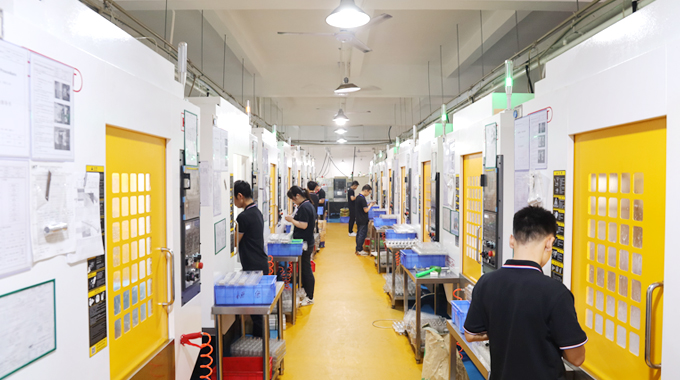
In conclusion, both HDPE and Delrin are exceptional materials with unique properties that make them ideal for a wide range of industrial and commercial applications. From their superior mechanical strength and chemical resistance to their excellent machinability and versatility, both materials offer distinct advantages depending on the specific needs of your project.
HDPE shines in applications requiring durability, chemical resistance, and environmental sustainability, making it perfect for industries like packaging, construction, and agriculture. On the other hand, Delrin, with its high mechanical strength, low friction, and dimensional stability, is the material of choice for precision parts in automotive, aerospace, medical, and consumer goods industries.
When it comes to CNC machining, both materials can be processed using a variety of methods, such as injection molding, extrusion, and CNC machining. VMT CNC Factory provides high-quality, precision machining services for both HDPE and Delrin, ensuring that your parts are crafted with the utmost attention to detail, cost-effectiveness, and efficiency.
Whether you require low-volume prototyping or large-scale production, our team at VMT has the expertise and technology to deliver parts that meet your exact specifications. With a strong commitment to quality control, sustainability, and customer satisfaction, we ensure that every part we produce is reliable and performs optimally in its intended application.
If you’re considering HDPE or Delrin for your next project, VMT CNC machining factory is the partner you can trust for precision CNC machining parts. Contact us today to discuss your requirements and receive a tailored solution that fits your needs perfectly.
Is Delrin stronger than HDPE?
Yes, Delrin (Polyoxymethylene) is generally stronger than HDPE (High-Density Polyethylene). Delrin offers higher tensile strength, rigidity, and dimensional stability, making it more suitable for applications where mechanical strength and precision are critical. However, HDPE is still strong in its own right, particularly in applications requiring chemical resistance and toughness.
Is Acetal the same as High-Density Polyethylene (HDPE)?
No, Acetal and HDPE are different materials. Acetal, also known as Delrin, is a type of polyoxymethylene (POM) and is known for its high mechanical strength, low friction, and dimensional stability. HDPE, on the other hand, is a polymer made from ethylene and is recognized for its chemical resistance, low moisture absorption, and high durability.
What is stronger than Delrin?
Materials like PEEK (Polyetheretherketone) and Polycarbonate are generally stronger than Delrin. PEEK, in particular, offers exceptional strength, temperature resistance, and chemical stability, making it suitable for high-performance applications in aerospace and automotive industries.
Is HDPE the strongest plastic?
While HDPE is very strong and durable, it is not the strongest plastic. Polycarbonate and PEEK are generally considered stronger due to their higher tensile strength, heat resistance, and impact resistance. However, HDPE excels in other areas like chemical resistance and low moisture absorption.
What is better than HDPE?
Polycarbonate and Delrin can be considered better than HDPE for certain applications. Polycarbonate offers superior impact resistance and optical clarity, while Delrin provides higher strength, low friction, and dimensional stability. The best material depends on your specific application needs.
Why is Delrin so expensive?
Delrin is relatively expensive because of its superior mechanical properties, high dimensional stability, and excellent machinability. Additionally, Delrin is produced from specialized monomers and requires more precise manufacturing processes compared to simpler materials like HDPE.
Is HDPE stronger than polypropylene?
Yes, HDPE is generally stronger than polypropylene, especially in terms of tensile strength and impact resistance. However, polypropylene offers better chemical resistance, particularly against acids and bases, making it preferable in certain applications.
What materials are equivalent to Delrin?
Materials like Acetal, Nylon, and Polyoxymethylene (POM) are equivalent to Delrin. These materials share similar properties, such as high mechanical strength, low friction, and chemical resistance.
What are the disadvantages of HDPE?
The main disadvantages of HDPE are its relatively low heat resistance compared to materials like PEEK or Delrin, and its tendency to expand with temperature fluctuations. It also can be more challenging to bond with adhesives and may not be suitable for high-precision applications.
Does HDPE break easily?
No, HDPE is generally very tough and resistant to breaking. It has excellent impact resistance, especially at low temperatures. However, it can become brittle over time when exposed to UV radiation or extreme cold.
Is HDPE harder than UHMW?
HDPE and UHMW (Ultra-High-Molecular-Weight Polyethylene) are similar in properties, but UHMW is generally harder, more abrasion-resistant, and more resilient under extreme conditions. UHMW also offers better impact resistance and is often used in high-wear applications.
Is Delrin the same as UHMW?
No, Delrin (Acetal) and UHMW are distinct materials with different properties. Delrin is known for its superior mechanical strength, low friction, and dimensional stability, making it ideal for precision applications. UHMW, on the other hand, is more resistant to wear and abrasion and is often used in material handling and high-impact environments.
Which is stronger, ABS or HDPE?
HDPE is generally stronger than ABS in terms of tensile strength and impact resistance. However, ABS has better toughness at low temperatures and is more easily molded, making it suitable for applications where impact resistance at colder temperatures is important.
Is HDPE self-lubricating?
Yes, HDPE has self-lubricating properties due to its low friction coefficient. This makes it ideal for applications such as bearings, bushings, and conveyor systems, where reduced friction and wear are essential.
Is HDPE stronger than polycarbonate?
No, polycarbonate is stronger than HDPE. Polycarbonate has higher tensile strength, impact resistance, and heat deflection properties, making it ideal for demanding applications like eyewear lenses, security glazing, and automotive parts.
How to glue HDPE?
Gluing HDPE can be difficult due to its low surface energy. To achieve a strong bond, you may need to use a specialized adhesive, such as an epoxy resin or a plastic bonding adhesive. Surface preparation, such as sanding or using a primer, can also help improve adhesion.
Is HDPE more expensive than steel?
No, HDPE is generally less expensive than steel. While HDPE offers excellent properties in terms of chemical resistance and durability, steel is a stronger, more versatile material used in applications requiring higher strength and load-bearing capacity.
What plastic is harder than Delrin?
Materials like PEEK (Polyetheretherketone) and Polycarbonate are harder and more durable than Delrin. These plastics offer superior performance in extreme environments, with higher heat resistance and mechanical strength.
What is stronger than HDPE?
Materials such as Polycarbonate, PEEK, and Delrin are stronger than HDPE. These materials are used in applications where higher mechanical strength, heat resistance, and impact resistance are necessary.
How durable is Delrin?
Delrin is highly durable, offering excellent wear resistance, dimensional stability, and resistance to fatigue and impact. It is suitable for use in demanding environments, especially in mechanical components that require high precision and strength.
Is Delrin hard or soft?
Delrin is considered hard and rigid, with a high tensile strength and resistance to wear and deformation. It maintains its shape and structural integrity under stress, making it ideal for precision parts and mechanical applications.
Is ABS stronger than Delrin?
No, Delrin is generally stronger than ABS in terms of mechanical strength, rigidity, and dimensional stability. Delrin is preferred in applications requiring precision and durability, while ABS is more commonly used for applications where ease of molding is a priority.
Does Delrin absorb water?
No, Delrin has very low moisture absorption. It remains stable and unaffected by water, which makes it ideal for use in humid or wet environments where dimensional stability and resistance to swelling are important.
